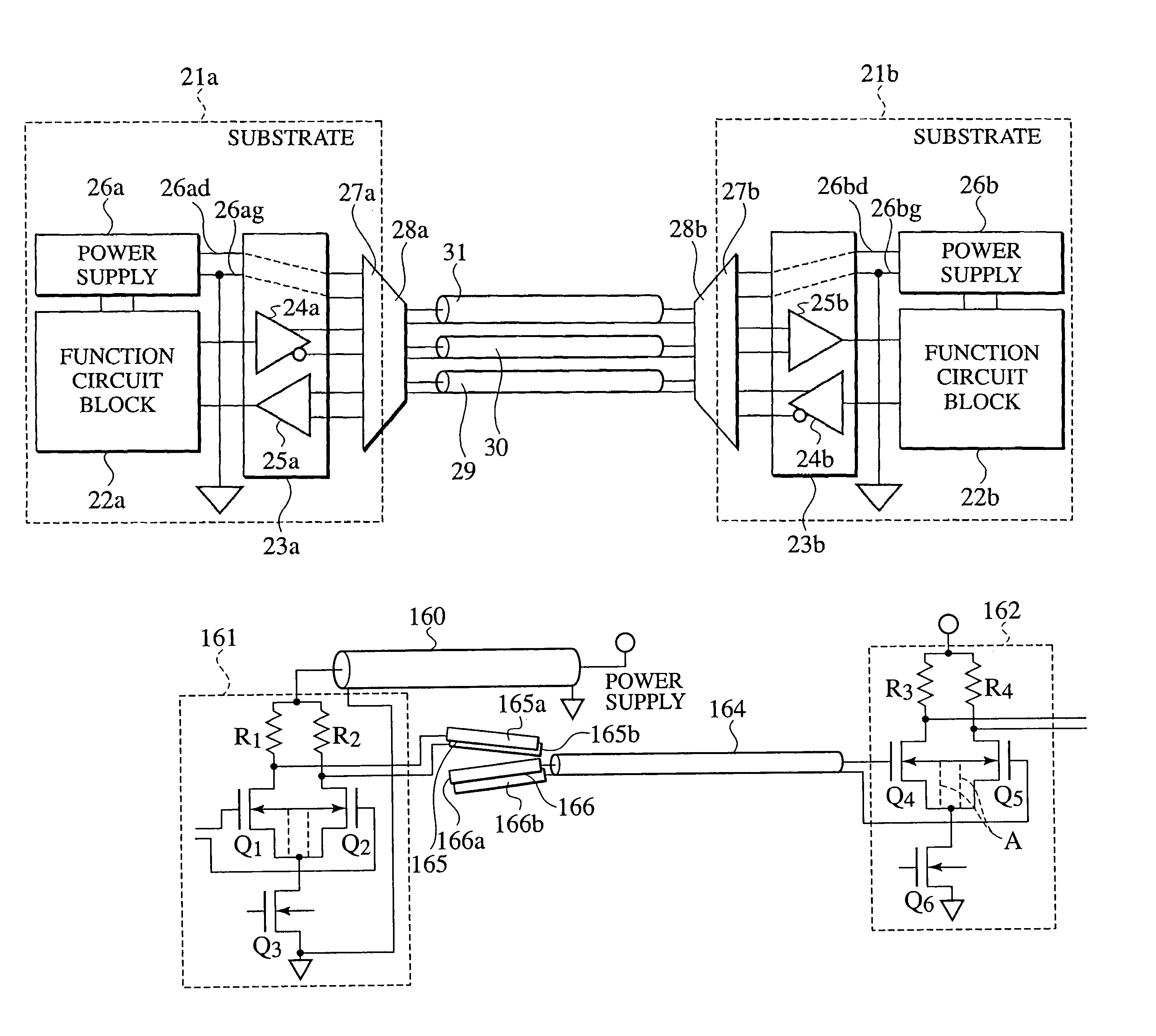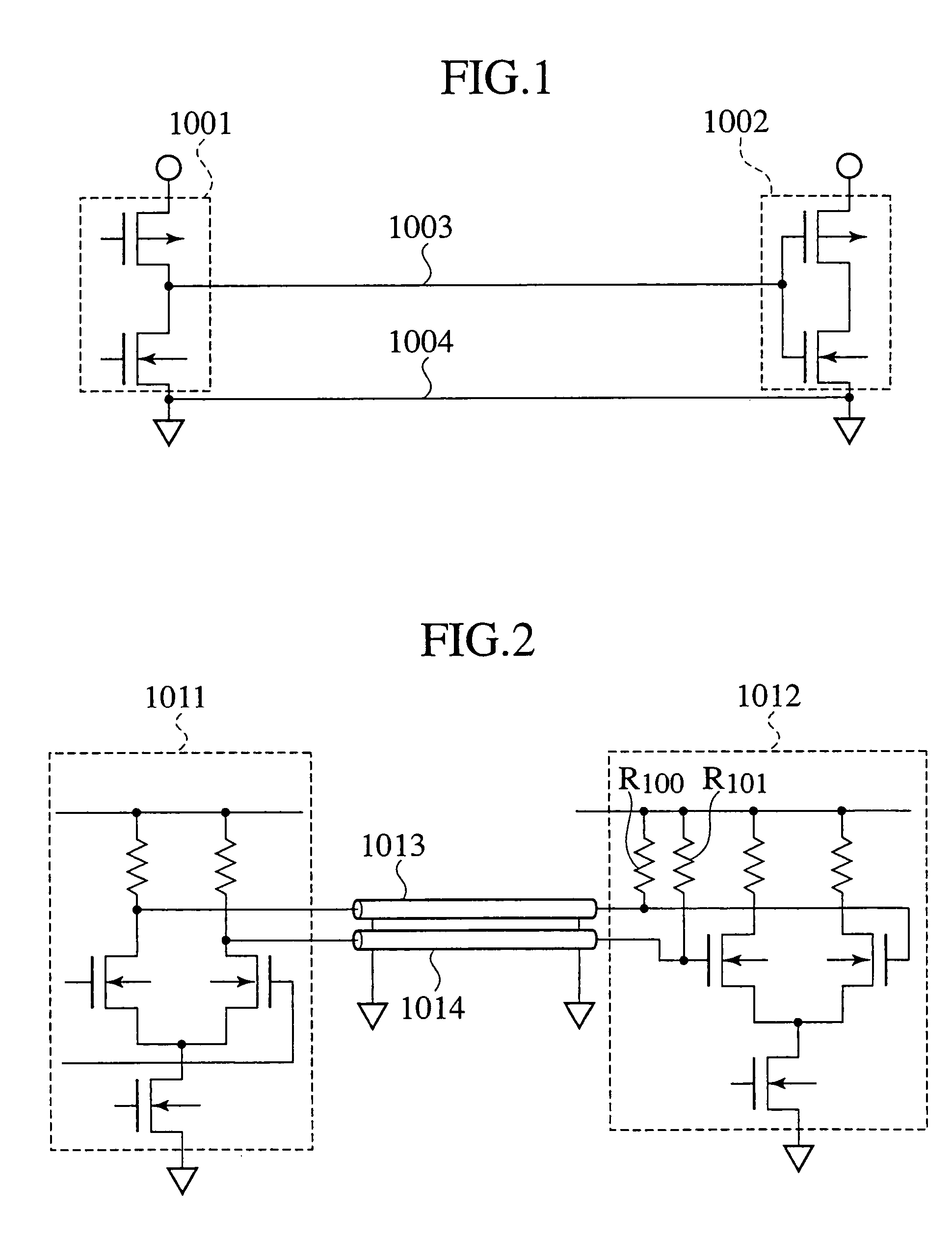Transmission cable structure for GHz frequency band signals and connector used for transmission of GHz frequency band signals
a technology of ghz frequency band and transmission cable, which is applied in the direction of logic circuit coupling/interface arrangement, pulse technique, waveguide, etc., can solve the problem of differential signal skew due to fluctuation of characteristics of transistors, and require double the number of transistors
- Summary
- Abstract
- Description
- Claims
- Application Information
AI Technical Summary
Benefits of technology
Problems solved by technology
Method used
Image
Examples
Embodiment Construction
[0079]The preferred embodiments according to the present invention will now be described with reference to the drawings.
[0080]
[0081]When theoretically studying transmission cables, whether to form a model using concentrated constant circuits or distributed constant circuits depends on the relationship of the length L of a transmission cable and the wavelength λ of the transmission signal transmitted in the cable. For the present invention the critical value for the length of a transmission cable is obtained from
[0082]Lcritical=λ40=c040fclockμrɛr,(1)
where λ represents the wavelength of a fundamental harmonic wave (sine wave) where Fourier series expansion is applied to a transmission signal (pulse signal) having a pulse waveform, C0 is the speed of the electromagnetic wave in a vacuum, μr the relative permittivity of insulating material encompassing the transmission cable, and fclock represents the frequency of maximum clock pulse flowing in the transmission cable.
[0083]The meani...
PUM
 Login to View More
Login to View More Abstract
Description
Claims
Application Information
 Login to View More
Login to View More - R&D
- Intellectual Property
- Life Sciences
- Materials
- Tech Scout
- Unparalleled Data Quality
- Higher Quality Content
- 60% Fewer Hallucinations
Browse by: Latest US Patents, China's latest patents, Technical Efficacy Thesaurus, Application Domain, Technology Topic, Popular Technical Reports.
© 2025 PatSnap. All rights reserved.Legal|Privacy policy|Modern Slavery Act Transparency Statement|Sitemap|About US| Contact US: help@patsnap.com



